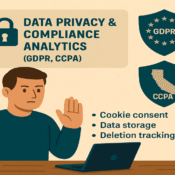
Predictive Analytics Using AI/ML
How Machine Learning Is Reshaping Data Forecasting
Today’s businesses don’t just want to know what happened — they want to know what’s going to happen. That’s where predictive analytics comes into play.
By combining historical data with the power of AI and machine learning, businesses can accurately forecast outcomes such as user behavior, churn risk, lifetime value, and even future revenue trends.
This shift from reactive to proactive strategy is changing the game across industries.
What Is Predictive Analytics?
Predictive analytics uses statistical models and machine learning algorithms to analyze historical data and make forward-looking predictions.
Instead of relying solely on intuition or past trends, organizations can now use data-driven insights to:
-
Forecast customer churn
-
Identify high-value users
-
Predict purchasing behavior
-
Optimize marketing spend
-
Plan inventory or operations
-
Detect anomalies or fraud
The Role of AI & Machine Learning
AI/ML takes predictive analytics to the next level. These models can learn complex patterns and improve continuously as more data becomes available.
Some widely used ML approaches include:
-
Classification models (predict churn or conversion likelihood)
-
Regression models (forecast revenue or lifetime value)
-
Clustering (identify audience segments)
-
Time-series forecasting (project trends over time)
Tools That Power Predictive Analytics
You don’t need to build everything from scratch. Many platforms make it easier to implement predictive capabilities:
-
Google BigQuery ML – Build and train ML models directly inside your data warehouse.
-
Vertex AI / AWS SageMaker – Scalable ML platforms for custom model deployment.
-
Python + Scikit-learn / TensorFlow – For custom pipelines and control.
-
Looker / Tableau / Power BI – Integrate predictive insights into business dashboards.
Real-World Use Cases
-
E-commerce: Predict which users are likely to abandon cart and target them with timely offers.
-
SaaS: Identify at-risk customers based on engagement patterns and reduce churn.
-
Finance: Spot fraudulent transactions before they escalate.
-
Healthcare: Forecast patient readmissions or optimize care plans.
Final Thoughts
Predictive analytics powered by AI/ML gives businesses a critical edge. It helps answer the “what’s next?” question with confidence—and that can mean smarter strategies, better user experiences, and higher ROI.
The future isn't just coming. With predictive analytics, you can see it coming.




